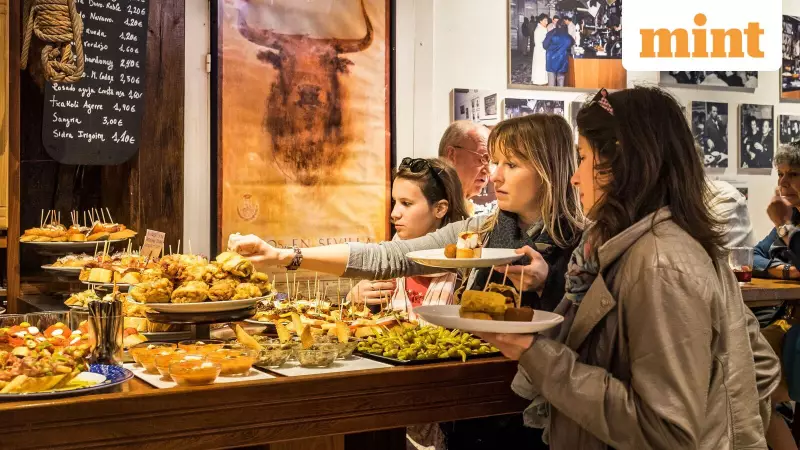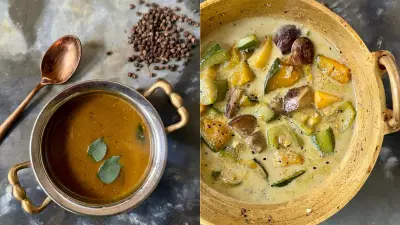
Discovering San Sebastián's Pintxo Culture
The Spanish coastal town of San Sebastián, known for its Michelin-starred restaurants, offers a unique culinary ritual that goes beyond fine dining. The pintxo bar crawl, locally called txikiteo, represents the heart of Basque social life and gastronomy. This vibrant tradition transforms eating into an energetic, social experience that every food enthusiast should try at least once.
What Exactly Are Pintxos?
Unlike the complimentary tapas found elsewhere in Spain, pintxos are sophisticated, paid-for finger foods typically served on bread and secured with a toothpick. The name comes from the Spanish verb 'pinchar,' meaning 'to pierce.' Eskerne Falcón, a local gastronomy tour guide, explains their significance: "Pintxos were invented in San Sebastián and now it's our way of life. We have the sea and mountains providing the best ingredients. Somebody had the genius of putting them on bread with a toothpick."
The variety is astonishing, ranging from simple combinations like tuna on bread with pickled pepper to elaborate creations like perfectly seared foie gras on apple compote. Despite their small size, each pintxo demands the same careful technique as a fine dining dish, condensed into just two to three bites.
The Perfect Pintxo Crawl Experience
Your journey should begin with the classic Gilda - a simple yet powerful combination of salt-cured anchovy, pickled olive, and bright green chili threaded onto a toothpick. This briny powerhouse delivers a rush of salt, acid, and spice that perfectly introduces the San Sebastián experience.
Ganbara in the historic Parte Vieja (Old Town) serves as an ideal starting point. The atmosphere is electric with Spanish chatter, clinking glasses, and the rhythmic thump of coffee machines. The floor littered with crumpled paper napkins signals an authentic pintxo hotspot. The bar counter displays smoked salmon, spider crab tartlets, and skewered pepper towers. Don't miss their monkfish and prawn brochette or the meaty wild mushrooms with egg yolk.
A five-minute walk leads to Antonio Bar, famous for its tortilla Española. The warm wedge with its liquid center oozing caramelized onions and peppers is worth the visit. Accompany your feast with a glass of txakoli, a sparkling white wine traditionally poured from height to aerate it.
Casa Vallés, established in 1942, offers the iconic Gilda that deserves special attention. Interestingly, it's named after Rita Hayworth's character from the 1946 film of the same name.
Local Secrets and Etiquette
Falcón shares crucial local insights: "Tourists tend to form queues outside pintxo bars. Locals don't like that. Even when bars are packed, we get in and make eye contact with the bartender. That's the whole point of a pintxo crawl."
The strategy involves moving between bars rather than settling in one place. "The trick is to not stay in the same bar for too long. Get a drink and a pintxo or two, then quickly hop to another. You'll never see a local with a plate full of pintxos. That's what tourists do," Falcón advises.
At Bar Martínez, try the red chilli stuffed with tuna and tartar sauce drizzled with vinaigrette. Bar Sports offers traditional cod pil-pil, a silky emulsion of olive oil and fish gelatin packed with umami flavor.
By the time you reach El Tamboril, you'll have mastered the system: plunging past crowds, claiming counter space, and quickly placing orders like a local.
The Unforgettable Culinary Adventure
In any other city, food this good would be enjoyed seated. But in San Sebastián, the feast is fast, fleeting, and completely exhilarating. You'll leave the Old Town exhausted, smelling of olive oil and grilled seafood, but with memories of the most delicious chaos you've ever experienced.
The pintxo crawl represents more than just eating - it's a social ritual that embodies the Basque approach to life: vibrant, communal, and deeply connected to exceptional ingredients from both sea and mountain.





